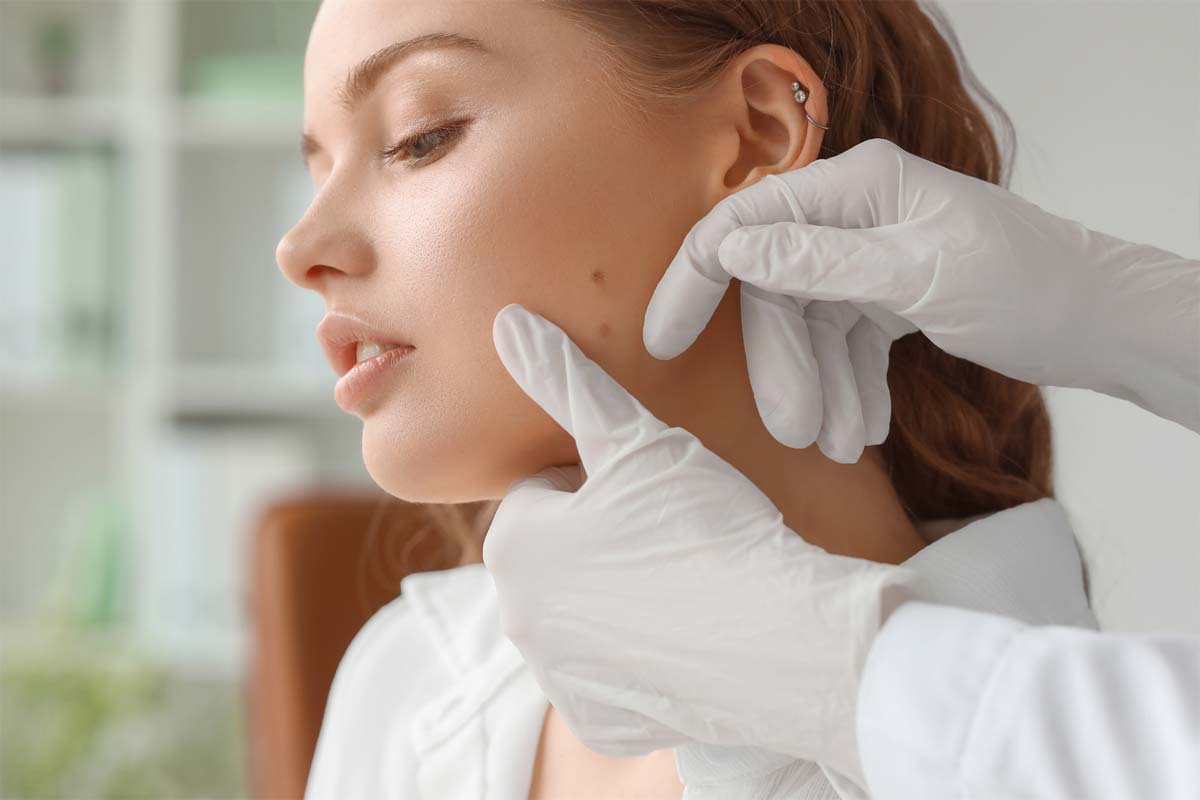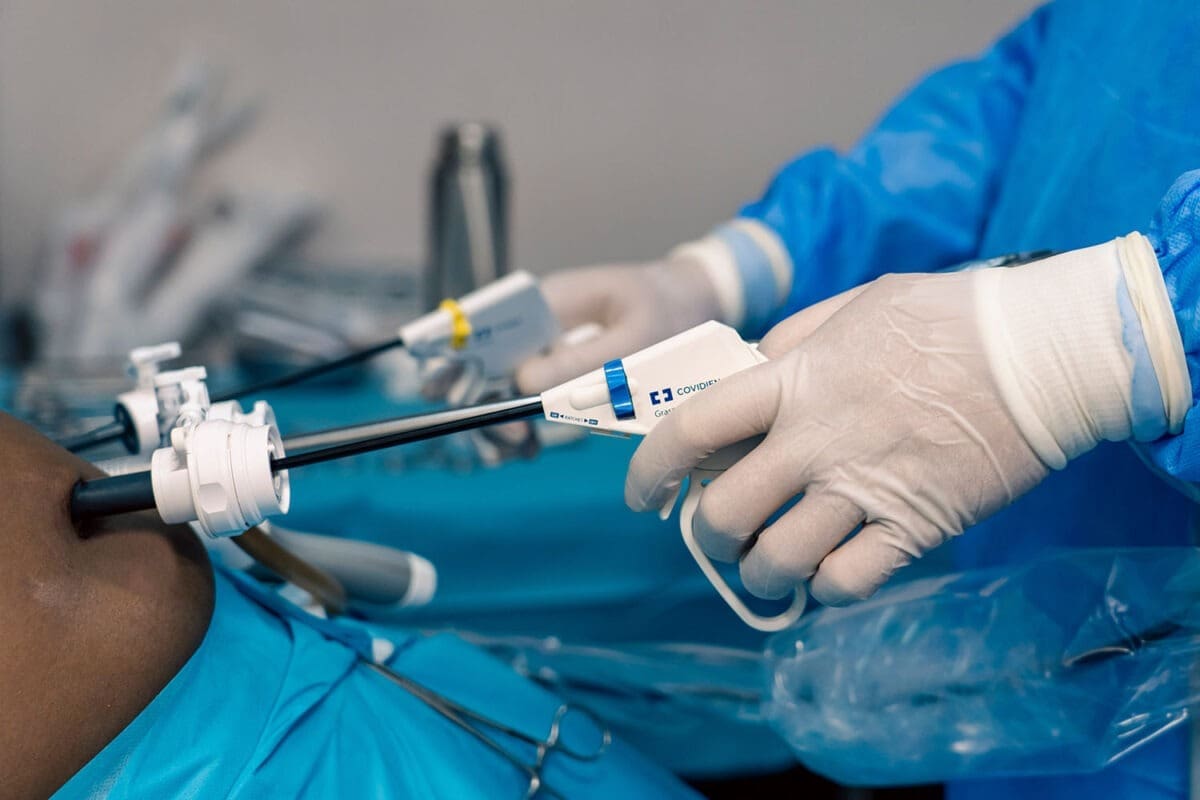Last Updated on November 26, 2025 by Bilal Hasdemir
Caring for patients with gallbladder drainage devices is very important. Flushing a cholecystostomy tube is key to keeping it working right. At Liv Hospital, we focus on the right care and upkeep of these devices. This ensures patient safety and comfort.

Our guide will show you how to flush cholecystostomy tube. It will help you manage percutaneous cholecystostomy drain care with ease. By following our advice, you can lower the chance of infection and keep the device working well.
Key Takeaways
- Understand the importance of flushing a cholecystostomy tube for patient care.
- Learn the step-by-step process of managing a percutaneous cholecystostomy drain.
- Discover how to maintain the patency of a cholecystostomy drain bag.
- Reduce the risk of infection with proper care and maintenance.
- Gain confidence in caring for patients with gallbladder drainage devices.
Understanding Cholecystostomy Tubes and Their Purpose
It’s important for patients and caregivers to know about cholecystostomy tubes. They help manage gallbladder disease. These devices offer relief and support during recovery.
What is a Cholecystostomy Tube?
A cholecystostomy tube, or percutaneous gallbladder drain, is a catheter in the gallbladder. It’s placed through the skin to drain bile. This is done under imaging to make sure it’s in the right place.
The tube helps relieve the gallbladder by removing blockages or inflammation. It’s key for those who can’t have surgery right away.
Common Indications for Cholecystostomy Tube Placement
These tubes are often used for patients with acute cholecystitis. They’re at high risk for surgery problems because of health issues. They’re also used for obstructive jaundice and some gallbladder diseases where drainage is needed.
- Acute cholecystitis in high-risk surgical patients
- Obstructive jaundice
- Gallbladder disease requiring drainage
Types of Gallbladder Drainage Devices
There are different gallbladder drainage devices. These include percutaneous cholecystostomy drains and cholecystectomy drainage bags. The choice depends on the patient’s needs and the situation.
Percutaneous cholecystostomy drains are for temporary use. Cholecystectomy drainage bags are for after surgery to manage bile. Knowing about these devices is key for proper care.
The Importance of Proper Tube Maintenance
Keeping a cholecystostomy tube working right needs careful upkeep. It’s key to avoid problems and keep the tube doing its job.
Preventing Blockages and Infections
Stopping blockages is a big deal with these tubes. Things like debris, thick bile, or kinks can cause trouble. Using saline to flush the tube helps keep it clear. Also, using sterile technique when cleaning and changing dressings is very important to avoid infections.
Infections can happen from bacteria around the tube or inside it. Look out for redness, swelling, more pain, or discharge. Catching these signs early is key to avoiding bigger issues.
Maintaining Tube Patency
Keeping the tube open is essential for it to work. Flushing it regularly helps avoid blockages and keeps it open. How often you flush depends on the patient and the tube type.
Watch for any signs the tube might not be working right, like leaks or hard flushing. Fixing these problems fast can stop bigger problems.
Consequences of Improper Maintenance
Not taking care of the tube can cause big problems. Issues like tube occlusion, infection, or even the tube falling out can happen. If the tube gets blocked, bile can build up, causing pain, jaundice, or even sepsis.
Bad maintenance can also lead to infections. These can range from simple site infections to serious ones like cholangitis or sepsis. So, sticking to a strict care plan is very important for the patient’s safety and health.
Essential Supplies for Flushing a Cholecystostomy Tube
Flushing a cholecystostomy tube needs careful preparation and the right supplies. This ensures patient safety and keeps the tube working well. We must gather the necessary sterile supplies and prepare a clean workspace.
Sterile Supplies Needed
To safely flush a cholecystostomy tube, we need certain sterile supplies ready:
- Sterile saline solution (0.9% sodium chloride)
- Sterile gloves
- Syringes (usually 10-20 ml)
- Needles (if required for the specific tube)
- Alcohol swabs or antiseptic wipes
- Dressings or gauze pads
Using sterile supplies is key to avoid bacteria in the tube or the patient’s body. This helps lower the risk of infection.
Preparing Your Workspace
Before we start flushing, we must prepare a clean workspace. This means:
- Clearing a flat surface
- Cleaning the surface with a disinfectant
- Laying out the sterile supplies in an organized manner
- Ensuring good lighting
A clean workspace is vital for keeping the procedure aseptic.
Personal Protective Equipment
We also need to use Personal Protective Equipment (PPE). This protects us and the patient from contamination. The PPE includes:
- Sterile gloves
- A face mask
- A gown or apron (depending on the situation)
Wearing PPE is a critical step in infection control during flushing.
Preparation Steps Before Flushing
Getting ready is important for safely flushing a cholecystostomy tube. We must prepare both the patient and the equipment before starting.
Hand Hygiene and Aseptic Technique
First, we need to wash our hands thoroughly. Use soap and water or an alcohol-based sanitizer to avoid bacteria. “Hand hygiene is the cornerstone of infection prevention,” as guidelines say. Keeping everything clean is key to avoid contamination.
Patient Positioning
It’s vital to position the patient correctly for tube flushing. They should lie on their back with the tube site open. This makes it easier and less painful.
Assessing the Tube and Insertion Site
Before we flush, we check the tube and site. Look for damage or blockages in the tube and signs of infection at the site. “A thorough assessment before flushing can help identify problems early,” experts advise. For those with a perc cholecystostomy drain, make sure it’s in place and working right.
By taking these steps, we can make sure the flushing goes smoothly. This reduces risks and helps the patient’s health.
Step-by-Step Guide: How to Flush Cholecystostomy Tube
Flushing a cholecystostomy tube is a precise process. It requires careful steps to keep the tube working right. We’ll show you how to do it correctly.
Preparing the Saline Solution
First, we need to make the saline solution. This means using clean, sterile saline. It’s important to avoid any contamination during this step.
- Use sterile saline solution to prevent infection.
- Check the expiration date of the saline solution.
- Prepare the solution in a clean, well-lit area.
Accessing the Tube
Getting to the cholecystostomy tube needs careful handling. This helps prevent any contamination. Here’s what to do:
- Wash your hands thoroughly before handling the tube.
- Put on sterile gloves to maintain asepsis.
- Carefully remove any dressing or cap from the tube.
The Flushing Technique
The way you flush the tube is key to keeping it open. We suggest a gentle push-and-pull method to remove any blockages.
Key steps in the flushing technique include:
- Attach a sterile syringe to the tube.
- Gently flush with saline, using a push-and-pull motion.
- Avoid using excessive force, which can damage the tube or surrounding tissue.
Completing the Flush
After flushing, it’s important to finish the process right. This keeps the tube clean and working well.
Follow these steps to complete the flush:
- Aspirate any remaining fluid to ensure the tube is clear.
- Flush the tube again if necessary, based on the amount of debris or blockage.
- Secure the tube with a sterile cap or dressing.
By following these steps, we can make sure the cholecystostomy tube works right. This also helps avoid any problems.
Recommended Frequency and Volume Guidelines
The right amount and how often to flush a cholecystostomy tube depends on the patient. It’s key to keep the tube working well.
Standard Flushing Protocols
Most doctors suggest using 5-10 ml of saline solution. This amount helps keep the tube open without causing pain or problems.
- Use sterile saline solution to prevent infection.
- Flush gently to avoid damaging the tube.
- Watch for any signs of blockage during flushing.
Personalized Care Schedules Based on Drainage Volume
Patients with lots of drainage might need to flush more often. The amount of drainage can change how often you need to flush.
For example:
| Drainage Volume | Recommended Flushing Frequency |
| Low (<50 ml/day) | Weekly |
| Moderate (50-200 ml/day) | Every 2-3 days |
| High (>200 ml/day) | Daily or as needed |
Adjusting Frequency Based on Clinical Stability
How stable the patient is also matters. Those who are not stable or have just had the tube put in might need more flushing.
Change how often you flush based on the patient’s health, tube function, and any signs of trouble.
By customizing care, healthcare providers can better manage cholecystostomy tubes. This helps improve patient results.
Caring for Different Types of Drainage Systems
Different drainage systems for cholecystostomy tubes need special care. The type of system used affects the care routine and patient results. We will look at the care needs for various systems, like percutaneous cholecystostomy drains and cholecystectomy drainage bags.
Percutaneous Cholecystostomy Drain Management
Percutaneous cholecystostomy drains need careful care to avoid problems. Regular flushing is key to keep the drain open and prevent clogs. Use sterile saline solution for flushing, as it’s safe and won’t irritate.
“The key to effective percutaneous cholecystostomy drain management lies in regular maintenance and monitoring,” as emphasized by medical professionals. Make sure the drain is securely fastened and the insertion site is clean to lower infection risk.
Cholecystectomy Drainage Bag Maintenance
Cholecystectomy drainage bags must be emptied and cleaned often to stop bacterial growth and infection. Tell patients to empty the bag when it’s half full and clean it with mild soap and water. Also, check the bag often for any signs of leakage or damage.
- Empty the drainage bag when it’s half full.
- Clean the bag with mild soap and water.
- Inspect the bag regularly for leakage or damage.
Perc Chole Drain Specific Considerations
Perc chole drains have special care needs because of their design and function. Patients should watch out for drain displacement and secure it properly. Regularly check the drain and the skin around it for any early signs of trouble.
Knowing the unique needs of different drainage systems helps patients and caregivers give better care. This reduces the chance of complications and improves patient results. Always follow the specific care guidelines given by healthcare professionals for each drainage system.
Tube Site Assessment and Care
Checking and caring for the tube site is key when you have a cholecystostomy tube. It helps avoid infections, speeds up healing, and keeps the tube working right.
Daily Inspection Protocol
It’s important to check the tube site every day. Look for signs like redness, swelling, or discharge. Make sure the tube is in the right spot and not loose. Also, watch for any skin irritation from the dressing or tube.
- Inspect the site for redness or swelling
- Check for any discharge or leakage
- Ensure the tube is secure and not displaced
- Monitor skin condition around the site
Cleaning the Insertion Site
Cleaning the site is a big part of tube care. Use sterile saline solution and gauze to clean around the tube. Clean from the center out to avoid pushing bacteria in.
Steps for cleaning:
- Wash your hands thoroughly
- Use sterile gloves
- Clean around the site with sterile saline and gauze
- Pat dry with sterile gauze
Dressing Changes and Securement
Changing dressings regularly is important to keep the site clean and dry. Use a sterile dressing to cover it. When you change the dressing, make sure the tube is secure and not twisted.
Tips for dressing changes:
- Use sterile technique when handling the dressing
- Secure the tube to prevent displacement
- Check the tube for kinks or twists
By following these steps for tube site care, patients can lower the risk of problems. This ensures their cholecystostomy tube works well.
Recognizing Complications and When to Seek Help
It’s important to know the signs of complications when you have a cholecystostomy tube. Managing these devices means staying alert for any issues that might come up.
Warning Signs of Infection
Infections are a big risk with cholecystostomy tubes. Look out for increased redness, swelling, or pain around the tube site, fever, and any pus. If you see these signs, call your doctor right away.
A medical expert once said:
“Early detection of infection signs can prevent severe complications in patients with cholecystostomy tubes.”
Tube Displacement Indicators
Tube displacement is another problem that needs quick action. Signs include trouble flushing the tube, leakage, or the tube looking like it’s been pulled out. If you think the tube has moved, don’t try to fix it yourself. Get medical help fast.
| Signs | Description | Action |
| Increased redness or swelling | Inflammation around the tube site | Contact healthcare provider |
| Fever | Body temperature above normal | Seek medical attention |
| Purulent drainage | Pus or infected fluid leaking | Notify healthcare provider |
Emergency Situations Requiring Immediate Attention
Some situations need you to get medical help right away. These include severe abdominal pain, a lot of bleeding, or signs of sepsis like confusion or a fast heart rate. Don’t wait to get emergency care.
Changes in Drainage Characteristics
Watching the drainage from your cholecystostomy tube is key. Changes in color, consistency, or amount can mean trouble. For example, if the drainage gets darker or more, it could be a sign of a problem. Tell your doctor about any changes.
Knowing about these complications and when to get help can help you and your caregivers manage cholecystostomy tubes better. This can lower the chance of serious problems.
Conclusion
Proper care and maintenance of cholecystostomy tubes are key for patient recovery and avoiding complications. We’ve covered the important steps for flushing these tubes, including preparation and post-care. It’s also important to know about different gallbladder drainage devices, like percutaneous cholecystostomy drains.
Regular flushing and watching the tube site can stop blockages and infections. By following these guidelines, patients and caregivers can keep the tube working well. This helps the recovery process go smoothly.
We stress the need to stick to flushing protocols and watch out for complications. Good care of cholecystostomy tubes is vital for keeping patients healthy and avoiding hospital stays. By learning these techniques, people can play a big role in their care and get the best results.
Managing cholecystostomy tubes and related devices needs effort, patience, and a good understanding of the procedures. We urge patients and caregivers to ask for help from healthcare professionals if they have any questions or concerns about tube care or drain management.
FAQ
What is a cholecystostomy tube and why is it used?
A cholecystostomy tube is a device put into the gallbladder to drain bile and fluids. It helps treat acute cholecystitis, gallbladder obstruction, or other diseases needing drainage.
How often should I flush my cholecystostomy tube?
Flushing frequency varies based on your needs and health status. Usually, it’s done daily or every other day. Use 5-10 ml of sterile saline as directed by your healthcare provider.
What are the signs of infection or complications with my cholecystostomy tube?
Watch for redness, swelling, or pain around the tube site. Also, look for fever, chills, or changes in drainage like blood or foul odor. Seek medical help if you notice these signs.
How do I care for the skin around my cholecystostomy tube?
Check the skin daily for infection or irritation. Clean the area with sterile saline or mild soap and water. Change dressings as your healthcare provider advises.
Can I shower or bathe with a cholecystostomy tube?
Yes, you can shower or bathe with the tube, but follow your healthcare provider’s instructions. Keep the tube site covered with a waterproof dressing.
What should I do if my cholecystostomy tube becomes dislodged or blocked?
If the tube comes out or gets blocked, don’t try to put it back or move it. Call your healthcare provider right away for help.
How is a percutaneous cholecystostomy drain different from other gallbladder drainage devices?
A percutaneous cholecystostomy drain is inserted directly into the gallbladder through the skin. It’s for temporary drainage and is placed under imaging. Other devices, like drainage bags, are used after surgery.
What are the essential supplies needed for flushing a cholecystostomy tube?
You’ll need sterile saline solution, gloves, personal protective equipment (PPE), and a clean workspace. Make sure all supplies are sterile and not past their expiration dates.
References
- Khardori, N., Wong, E., Carrasco, C. H., Wallace, S., Patt, Y., & Bodey, G. P. (1991). Infections associated with biliary drainage procedures in patients with cancer. Clinical Infectious Diseases, 13(4), 587-591. https://pubmed.ncbi.nlm.nih.gov/1925274/






